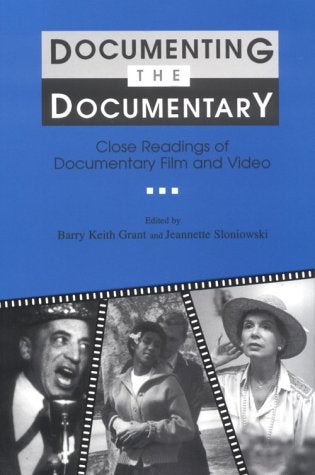Wayne State University Press
Documenting the Documentary: Close Readings of Documentary Film and Video, New and Expanded Edition
Regular price
$9.95 USD
Regular price
Sale price
$9.95 USD
Unit price
per
Shipping calculated at checkout.
Couldn't load pickup availability
Title: Documenting the Documentary: Close Readings of Documentary Film and Video, New and Expanded Edition
Author: Jim Leach
G: 1704276
ISBN: 9780814326398
Publisher: Wayne State University Press
Published: 1998
Binding: Paperback
Language: English
Number of Pages: 488
Section: Performing Arts | Film | History & Criticism
Condition Note: Excellent, unmarked copy with little wear and tight binding. We ship in recyclable American-made mailers. 100% money-back guarantee on all orders.
Publisher Description: Documenting the Documentary features essays by twenty-seven film scholars from a wide range of critical and theoretical perspectives. Each essay focuses on one or two important documentaries, engaging in questions surrounding ethics, ideology, politics, power, race, gender, and representation -- but always in terms of how they arise out of or are involved in the reading of specific documentaries as particular textual constructions. By closely reading documentaries as rich visual works, this anthology fills a void in the critical writing on documentaries, which tends to privilege production over aesthetic pleasure. As we perceive and comprehend the world through visual media increasingly, understanding the textual strategies by which individual documentaries are organized has become critically important. Together, the essays cover the significant developments in the history of the documentary, from the first commercially released feature, Nanook of the North (1922), to modern independent productions, such as An American Family (1973), Tongues Untied (1989), and Finding Christa (1991), and including important national and stylistic movements and various production contexts from the mainstream to the avant-garde. Seth Feldman places Dziga Vertov's Man with a Movie Camera (1929) within the context of constructivism and futurism; Vivian Sobchack discusses the strategies of Bunuel's Las Hurdas (Land without Bread, 1931) in relation to surrealism; and Joanne Hershfield explores Que viva Mexico! (1932) as the presentation of an exotic culture by a European director. Documenting the Documentary offers clear, serious, and insightful analyses of documentary films, and is a welcome balancebetween theory and criticism, abstract conceptualization and concrete analysis.

